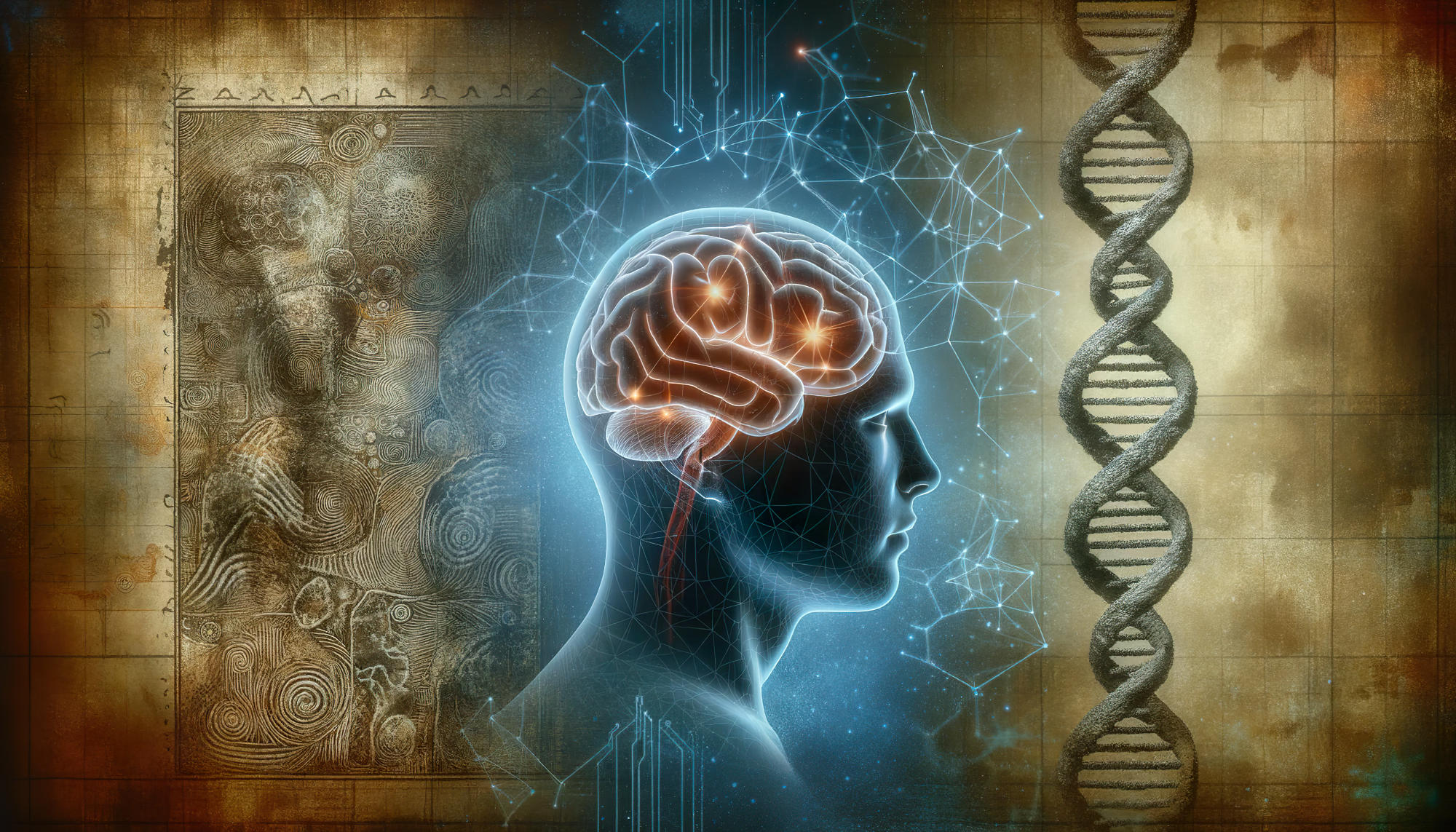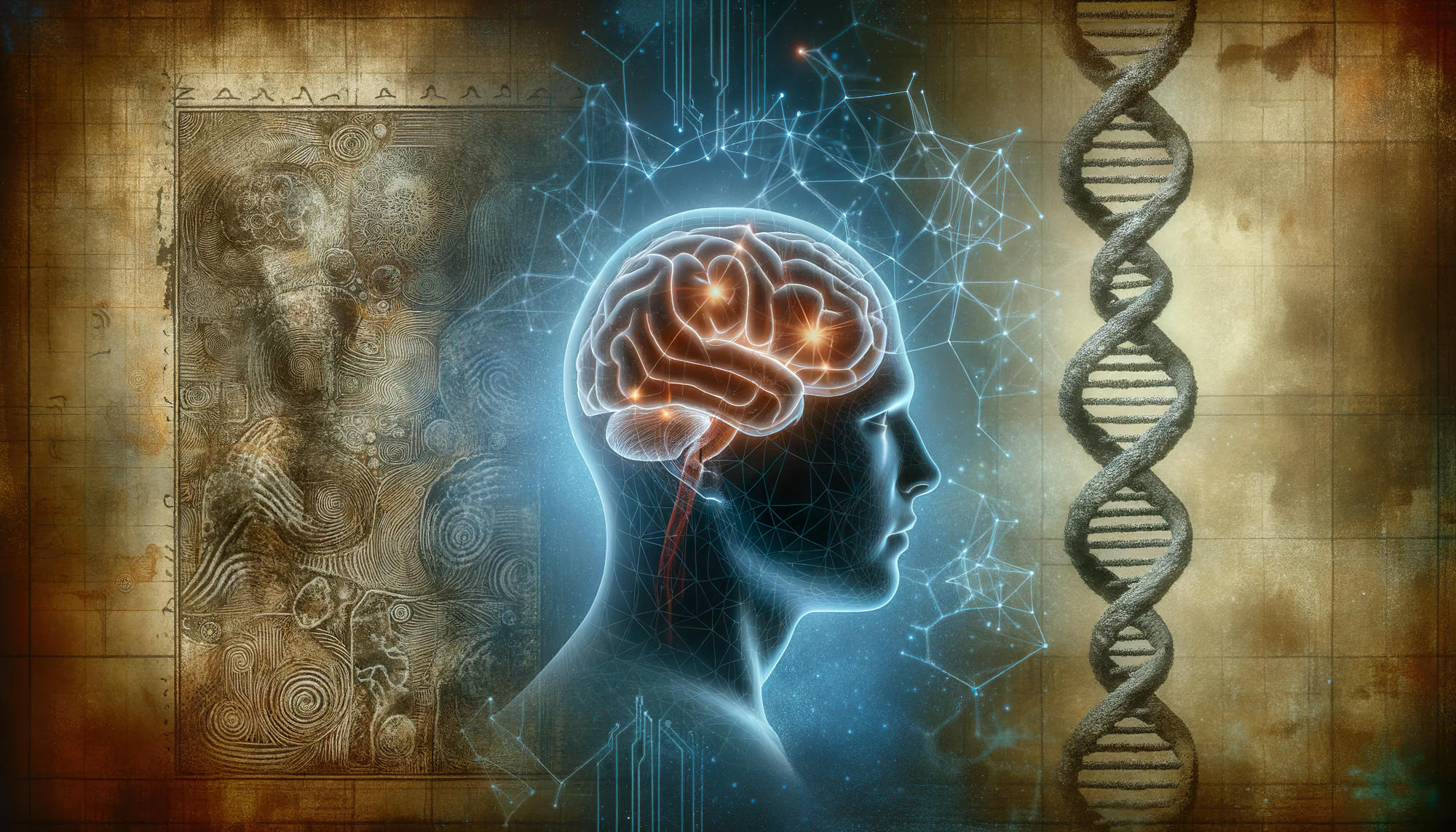
Modern humans interbred with Denisovans in Asia, giving them a genetic adaptation to regulate zinc that helped humans adapt to cold climates, a trait widespread among non-African populations today. This adaptation, although beneficial for cold adaptation, may also predispose individuals to various psychological disorders.
The research suggests that the observed genetic variant, which affects zinc regulation, could indicate an evolutionary advantage in our ancestors’ adaptation to cold.
Approximately 60,000 years ago, modern humans embarked on a migration out of Africa, a migration often referred to as the “Out of Africa” event. Upon arriving in Asia, these humans encountered the Denisovans. This meeting likely led to a mixture of conflict and cooperation, but also different hybridizations. In fact, even today modern humans retain genetic variants of Denisovan origin in our genome, which attest to those initial interactions.
Now, a team led by the Institute of Evolutionary Biology (IBE), a joint center of the Spanish National Research Council (CSIC), Pompeu Fabra University (UPF), and the Department of Medicine and Life Sciences (MELIS) at UPF, has come to a conclusion. Identified one of the most widespread traces of the genetic heritage of the extinct Denisovan species in modern humans. The team of Elena Bosch, principal investigator at IBE, and Rubén Vicente, principal investigator at MELIS-UPF, discovered that this genetic adaptation helped ancestral groups of The wise one To adapt to the cold.
The observed variant, which is involved in zinc regulation and has a role in cellular metabolism, could also be a reason that predisposes modern humans to psychiatric disorders such as depression or schizophrenia.
Genetic variation in zinc regulation may have meant an evolutionary advantage
How adaptation shapes current genetic variation in human populations is of great interest in evolutionary genetics.
Starting from this question, Elena Bosch’s team has identified an adaptive variant among present-day human groups in a region of our genome that bears close resemblance to the genome of an extinct ancestral group: the Denisovans.

Geographic distribution of the identified substitution in the SLC30A9 gene in current human populations and possible scenarios for Denisovan introduction. The ancestry of SLC30A9 corresponds to the pre-crossover gene version between Denisovan and Sapiens. The SLC30A9 variant refers to the version shared with the Denisovan. Credit: Jorge Garcia and Elena Bosch. Licensed under Creative Commons 4.0. Created in map layout.
“Through genomic analysis, we noticed that the genetic variant observed came from our interbreeding with ancient humans in the past, perhaps with Denisovans,” says Anna Rocca-Humbert, co-first author of the study. The team ruled out Neanderthal heritage because these populations do not have this mutation.
“Apparently, the change was beneficial and proved to be a selective advantage for humans. As a result, this variation in SLC30A9 “The gene was selected for and reached the current population,” adds Jorge Garcia Calleja, co-first author of the study.
The Evolutionary Population Genetics Laboratory, run by Bush, wanted to know what changes this genetic diversity of Denisovan origin was causing at the cellular level. “We discovered that this mutation definitely had implications for zinc transport within the cell, so we contacted Vicente’s team,” recalls Elena Bosch, principal investigator at IBE and co-leader of the study.
Zinc regulation: key to cold adaptation
“Elena contacted me because her team noticed a change in the amino sour In the zinc transporter, which was very different between the populations of Africa and Asia today. From here, we started asking ourselves questions and looking for answers,” commented Rubén Vicente. His team, in the Immune System Biophysics group in the Laboratory of Molecular Physiology, took on the technical challenge of studying the movement of zinc within cells.

Illustration that part of the transporter is located in mitochondria by super-resolution STED microscopic imaging with HEZ293 cells transfected with the zinc transporter ZnT9 (green). In purple color is the mitochondrial protein TOM 20 and in white color it is localized to mitochondria. Credit: Ruben Vicente.
Zinc, an essential element for human health, is an important messenger that transmits information from outside to inside cells and between different cellular compartments. Zinc deficiency causes growth, neurological and immune disorders, although “its regulation is still poorly studied due to the lack of molecular tools to monitor the flow of zinc.”
Vicente’s laboratory determined that the observed variant causes a new balance of zinc within the cell, promoting a change in metabolism. By altering the endoplasmic reticulum and mitochondria in cells, this difference leads to a potential metabolic advantage for dealing with a hostile climate. “The observed phenotype leads us to think about possible adaptation to cold,” emphasizes Vicente.
Denisovan genetic heritage can affect the mental health of populations in Europe and Asia
Zinc transport is also involved in the nervous system Arousal, and plays a role in people’s mental balance and health.
The team suggests that a variant in this zinc transporter, which is expressed in all tissues of the body, is associated with a greater susceptibility to suffering from some psychological illnesses. These include anorexia nervosa, hyperactivity disorder, Autism spectrum disorderBipolar disorder, depression, obsessive-compulsive disorder, and schizophrenia.
“In the future, expanding this study to include animal models may shed light on this predisposition to suffer from mental illness,” Vicente points out.
The genetic variant has left a global mark, except in Africa
Although this variant has been established in Asia as a result of hybridization between Denisovans and The wise oneIt also spread to European and Native American populations. In fact, it is present in populations all over the planet, although it is less common in the case of African populations.
The team suggests that Denisovan genetic adaptation likely had the largest geographic range yet discovered. “For example, the alternative in Ibas1 The inherited Denisovan gene allows for adaptation to life at high altitudes, but is only found in Tibetans. However, in our case, the impact extends to all populations outside Africa.”
Reference: “Human genetic adaptation related to cellular zinc homeostasis” by Ana Roca Humbert, Jorge García Calleja, Marina Vogel González, Alejandro Fierro Villegas, Gerard El Raja, Victor Herrera Fernandez, Anja Bošnjak, Gerard Montagne, and Esteban. Gutierrez, Felix Campillo, Ruben Vicente and Elena Bosch, September 25, 2023, PLOS Genetics.
doi: 10.1371/journal.pgen.1010950

“Typical beer advocate. Future teen idol. Unapologetic tv practitioner. Music trailblazer.”







More Stories
Boeing May Not Be Able to Operate Starliner Before Space Station Is Destroyed
How did black holes get so big and so fast? The answer lies in the darkness
UNC student to become youngest woman to cross space on Blue Origin